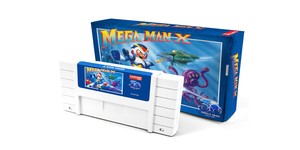
Intel Marks 60th Anniversary of the Transistor
SANTA CLARA, Calif., Dec. 10, 2007 – Intel Corporation on Dec. 16 celebrates the 60th anniversary of the transistor, the building block of today's digital world. Invented by Bell Labs and considered one of the most important inventions of the 20th century, transistors are found in many consumer electronics and are the fundamental component used to build computer chips, or the "brains" of the personal computer (PC).
Intel, the world's largest manufacturer of computer chips, has recently introduced its 45 nanometer (nm) next-generation family of quad-core processors. Called the biggest transistor advancement in 40 years by Intel Co-Founder Gordon Moore, the processors are the first to use Intel's Hafnium-based high-k metal gate (Hi-k) formula for the hundreds of millions of transistors inside these processors. Introduced on Nov. 12 and continuing into the next few months, this latest innovation is enabling servers, everyday PCs and laptops to become smaller, faster, sleeker and more energy-efficient while also eliminating eco-unfriendly lead and, in 2008, halogen materials.
Guided by Moore's Law
On April 19, 1965 Electronics Magazine published a paper by Moore in which he made a prediction about the semiconductor industry that has become the stuff of legend. Known as Moore's Law, his prediction states that the number of transistors on a chip doubles about every 2 years, enabling widespread proliferation of technology worldwide, and today it has become shorthand for rapid technological change.
Moore's Law not only predicts that computing technology will increase in value but at the same time would actually decrease in cost. The price of a transistor in Intel's newest chip family is about 1 millionth the average price of a transistor in 1968. If car prices had fallen at the same rate, a new car today would cost about one cent.
With its transistors turning on and off more than a trillion times per second, the Intel® Core™ Duo processor can complete close to a billion calculations in the blink of an eye or finish 4 million calculations in the time it takes a speeding bullet to travel one inch.1 And the average power of an Intel Core Duo processor is less than 1.1 watts, which is significantly less than many familiar household appliances, such as a 100W light bulb.2
Smaller and faster chips made possible by Intel's technology advancements benefit consumers lives by enabling improved performance, longer battery life, and sleeker, quieter and more energy-efficient PCs and laptops. If engineers continue Moore's Law and succeed in continuing to reduce the size of the transistor while increasing the speed, the world could expect amazing new innovations and applications such as real-time language translation and facial recognition, as well as enabling cars that take verbal commands to a destination.
For more information, visit the press kit at www.intel.com/pressroom/kits/events/60th_anniversary.
Intel, the world's largest chip maker, is also a leading manufacturer of computer, networking and communications products. Additional information about Intel is available at www.intel.com/pressroom.
Intel and the Intel logo are trademarks of Intel Corporation in the United States and other countries.
* Other names and brands may be claimed as the property of others.
** 45nm product is manufactured on a lead-free process. Lead-free per EU RoHS directive July 2006. Some E.U. RoHS exemptions may apply to other components used in the product package.
*** Residual amounts of halogens are below November 2007 proposed IPC/JEDEC J-STD-709 standards.
1 The average time it takes for a complete human blink is ~300 to 400 msec
2 http://www.solarsense.com/Spec_Your_System/Calculators.html
SANTA CLARA, Calif., Dec. 10, 2007 – Intel Corporation on Dec. 16 celebrates the 60th anniversary of the transistor, the building block of today's digital world. Invented by Bell Labs and considered one of the most important inventions of the 20th century, transistors are found in many consumer electronics and are the fundamental component used to build computer chips, or the "brains" of the personal computer (PC).
Intel, the world's largest manufacturer of computer chips, has recently introduced its 45 nanometer (nm) next-generation family of quad-core processors. Called the biggest transistor advancement in 40 years by Intel Co-Founder Gordon Moore, the processors are the first to use Intel's Hafnium-based high-k metal gate (Hi-k) formula for the hundreds of millions of transistors inside these processors. Introduced on Nov. 12 and continuing into the next few months, this latest innovation is enabling servers, everyday PCs and laptops to become smaller, faster, sleeker and more energy-efficient while also eliminating eco-unfriendly lead and, in 2008, halogen materials.
Guided by Moore's Law
On April 19, 1965 Electronics Magazine published a paper by Moore in which he made a prediction about the semiconductor industry that has become the stuff of legend. Known as Moore's Law, his prediction states that the number of transistors on a chip doubles about every 2 years, enabling widespread proliferation of technology worldwide, and today it has become shorthand for rapid technological change.
Moore's Law not only predicts that computing technology will increase in value but at the same time would actually decrease in cost. The price of a transistor in Intel's newest chip family is about 1 millionth the average price of a transistor in 1968. If car prices had fallen at the same rate, a new car today would cost about one cent.
With its transistors turning on and off more than a trillion times per second, the Intel® Core™ Duo processor can complete close to a billion calculations in the blink of an eye or finish 4 million calculations in the time it takes a speeding bullet to travel one inch.1 And the average power of an Intel Core Duo processor is less than 1.1 watts, which is significantly less than many familiar household appliances, such as a 100W light bulb.2
Smaller and faster chips made possible by Intel's technology advancements benefit consumers lives by enabling improved performance, longer battery life, and sleeker, quieter and more energy-efficient PCs and laptops. If engineers continue Moore's Law and succeed in continuing to reduce the size of the transistor while increasing the speed, the world could expect amazing new innovations and applications such as real-time language translation and facial recognition, as well as enabling cars that take verbal commands to a destination.
For more information, visit the press kit at www.intel.com/pressroom/kits/events/60th_anniversary.
Intel, the world's largest chip maker, is also a leading manufacturer of computer, networking and communications products. Additional information about Intel is available at www.intel.com/pressroom.
Intel and the Intel logo are trademarks of Intel Corporation in the United States and other countries.
* Other names and brands may be claimed as the property of others.
** 45nm product is manufactured on a lead-free process. Lead-free per EU RoHS directive July 2006. Some E.U. RoHS exemptions may apply to other components used in the product package.
*** Residual amounts of halogens are below November 2007 proposed IPC/JEDEC J-STD-709 standards.
1 The average time it takes for a complete human blink is ~300 to 400 msec
2 http://www.solarsense.com/Spec_Your_System/Calculators.html

MSI MPG Velox 100R Chassis Review
October 14 2021 | 15:04






Want to comment? Please log in.